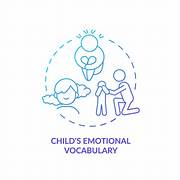Conflict Resolution Comic for Early Primary

Subtitle: Calm, Speak, and Choose: Helping Children Practice Calm Words and Fair Solutions
Updated: 2025-09-17
Authors: Roman Hudson
Brief Project Intro. This project creates a short instructional comic that teaches simple conflict steps for children in the early primary years. It uses plain language and clear panels to model naming feelings, using calm breaths, trying I statements, and choosing a fair solution such as take turns or trade. The aim is to give learners a friendly way to practice skills that reduce stress and improve relationships at school and at home
Understand (Discover, Interpret, Specify)
DESCRIBE THE CHALLENGE:
- Young Children need simple and repeadtle steps to help handle everyday conflicts with peers
- Throughout the ages 5-8 it can be challenging to name your feelings and understand what the feeling is and how to respond appropriatly
CONTEXT AND AUDIENCE:
- Typical learners are ages five to eight who can read simple sentences and recognize basic feelings from faces and body posture.
- Benefit from short practice, clear visuals, and concrete choices.
- This Comic could be used before conflict but also during conflict where a trusted adults can go through the comic with the child and help them work through there emotions
POV STATEMENT:
- A young child who feels upset during play needs simple steps to say feelings and try a fair solution so that the child can return to play and keep the friendship.
LEARNING OBJECTIVES:
- Students can identify three common feelings and match each to a face or posture.
- Students are able to use a simple I statement with a partner in a guided role play.
- (only when applicable) students with high emotional states will find this harder
- Students will be about to perscribe one fair solution for a simple playground problem such as take turns, trade, or play together.
Plan (Ideate, Sketch, Elaborate)
IDEATION:
I personally have been involved in working 1 on 1 with students who have difficulty recognizing feelings and have challenges coping with them. One thing I wished I had was a multimedia device to help communicate to students when their emotions are high, but that is also useful as a preventative exercise. Teachers or 1 on 1 support workers are often limited with resources, and so I want to create a comic that is versatile and could be carried on them, but also put up in the classroom and reinforced throughout the day. That’s why I included some tasks or exercises that could go along with the comic, so that students would practice before a situation and then take that knowledge and when it is reintroduced during a challenge their facin,g they will have the precursor knowledge to better emotionally regulate.
For this proposal, I did not rely on many outside sources but rather on my personal training and work experience. I am going to include research that helps support my reasoning for why I structured the comic in a given way, but overall, I am relying on personal experience. I believe that this is reasonable when it comes to helping professions because I think so much comes down to experience. Most people have a pretty good understanding of how to help children regulate emotions, but when it comes to actually doing it, it is the experience of when to give space, provide solutions, listen, etc., that really leads to results and good outcomes.
An example of this I like to give people is a 4-year-old child got his first goldfish, a couple of weeks later, it passed away. The parents bring the child to the toilet and say they need to flush the fish, and when they do, the child starts hysterically crying. One parent says, ‘Don’t worry, we’ll go to the store and get you a new one,” The child continues to cry, the other parent says ‘I know, it is really sad when our pets pass, it’s ok to feel this way,’ and then gives them a big hug. The child continues crying, but eventually embraces the hug and starts to feel better. The first parent wasn’t wrong, they just jumped to a solution too early, whereas the second parents 1st named the feeling, 2nd recognized the child’s emotion and reinforced that feeling emotion is okay and 3rd emotionally embraced the child without an expectation they would miraculously get better.
SCRIPT
Panel 1
Visual: Gym floor. One red ball. Leo and Bree both reach for it at the same time.
Leo: Hey, that is my turn.
Caption. When we both want the same thing, it can feel hard.
Panel 2
Visual: Close on Leo with a red light icon above his head. Hands clenched.
Leo: My body feels hot.
Caption: Leo pauses so the body can cool down.
Panel 3
Visual: Leo puts a hand on his tummy and counts on fingers. Teacher points to a calm breaths chart with three pictures.
Leo: Breathe in. Breathe out. One. Two. Three.
Key elements: Counting fingers are large and clear.
Panel 4
Visual: Red light fades to yellow, then green. Leo’s shoulders relax.
Leo: I feel calmer now.
Caption: When the body is calm the words can work.
Panel 5
Visual: Simple speech template next to Leo with blanks I feel, because, I need.
Leo: I feel sad because I have been waiting. I need a fair turn.
Panel 6
Visual: Three large choice icons on a clean background. Take turns with a timer. Trade with two hands, swapping. Play together with two kids and the ball.
Leo: Let us pick a fair solution.
Caption: Step two is to choose a fair plan.
Panel 7
Visual: Bree points to the take turns icon. A one-minute sand timer sits on the floor. Leo nods. Teacher gives a small thumbs up from the side.
Bree: I hear you. Let us take turns. You start. I go when the timer is done.
Panel 8
Visual: Timer running. Leo dribbles the ball while Bree watches with a calm face. The timer empties.
Bree: My turn now.
Leo: Here you go.
Caption: Working together keeps play happy.
Panel 9
Visual. Small check in box with four feeling faces. Calm. Happy. Okay. Still upset. Leo points to Happy. Bree points to Calm.
Teacher: How do you feel now? Point to the face that fits.
Panel 10
Visual: Same gym space. A simple sign shows Games Today. Another ball sits on a rack in the background.
Leo: I want to keep playing the passing game.
Bree: Me too.
Caption: The same steps help us keep play going.
Panel 11
Visual: A yellow light icon above Leo as the ball rolls between them.
Leo: I am getting upset. I will slow down.
Caption: Slow down before you speak.
Panel 12
Visual: The I statement template appears small. Leo faces Bree.
Leo: I feel worried because I do not want to lose my turn.
Bree: I can listen.
Panel 13
Visual. The three choice icons appear small in the corner. Bree points to Play together.
Bree: Let’s pass three times each before we shoot.
Leo: Sounds Good!
Panel 14
Visual. Teacher smiles while Leo and Bree pass the ball back and forth, counting together. A small card on the wall shows Calm. Speak. Choose.
Teacher: Great job using calm words and a clear plan.
Caption: Practice makes the steps feel easy and natural.
Plot
In the gym, Leo and Bree both reach for the same red ball at the same time, Leo feels his body heat up. He pauses to calm himself, taking three slow breaths until he feels ready to speak. Using an I statement, Leo says he feels sad because he has been waiting and needs a fair turn. Together, Leo and Bree, they look at three options and choose to take turns with a one minute timer. After switching turns, they do a quick feelings check and both report calm and happy. Later in the same space, they use the routine again to plan how to keep playing, agreeing to pass three times each before shooting. A teaching comes in an congragulates them and they keep the game going and show that Calm, Speak, Choose works to solve the problem that they faved and that to play fair is fun.
PRINCIPLES APPLIED:
Coherence
I tried to keep each panel uncluttered so kids focus on the action that teaches the skill. I also used this by cutting the decorative or over complicated visual aspect so that it frees up working memory for the steps that matter most. Ex, think plain background, one prop, and the single step icon that belongs on that panel (Mayer, 2022). I also tried to do this with captions so when a really important step happens, I add a caption so if a highly emotional child is reading the comic the information is more immediately available.
Signaling
Tried to give the eye a clear place to land using simple cues like a traffic light for calm and a speech-bubble template for I statements. These cues act like highlighters and show what comes first, next, and last. Consistent signals reduce searching and make the routine easier to follow (Mayer, 2022). I found it funny how multimedia is so layered how for the cards (which are multimedia) within the comic all the same rules of legibility all apply.
Redundancy
Used captions to do quick narration while speech bubbles carry the exact words students should try. Avoided repeating the same sentence in both places. This trims extra text so the art and the speaking task do not compete for attention (Mayer, 2022).
Spatial and temporal contiguity
I emphasized trying to put words and visuals that belong together right next to each other and reveal them at the same time. When Leo breathes, the light changes in that panel. This lowers the mental effort of figuring out where to look and when to use the step (Mayer, 2022).
Segmenting
Broke the emotional regulation routine into short beats that map specifically to Calm, Speak, and Choose. Tried to emphasize a small pause between beats so students can rehearse a line or gesture before moving on. This pacing supports learning and transfer better than one long explanation (Rey et al., 2019).
References
Mayer, R. E., & Fiorella, L. (Eds.). (2022). The Cambridge handbook of multimedia learning (3rd ed.). Cambridge University Press.
Rey, G. D., Beege, M., Nebel, S., Wirzberger, M., Schmitt, T. H., & Schneider, S. (2019). A meta-analysis of the segmenting effect. Educational Psychology Review, 31(2), 389–419. https://doi.org/10.1007/s10648-018-9456-4
